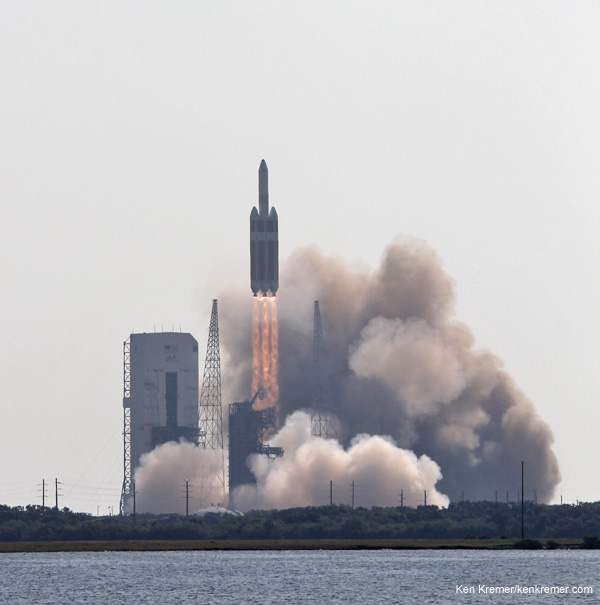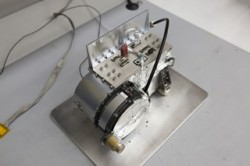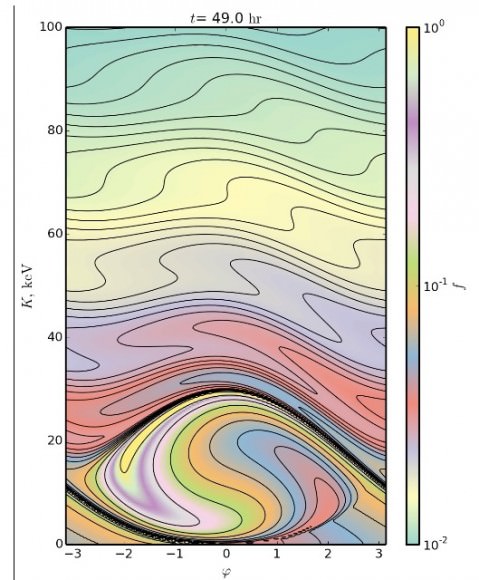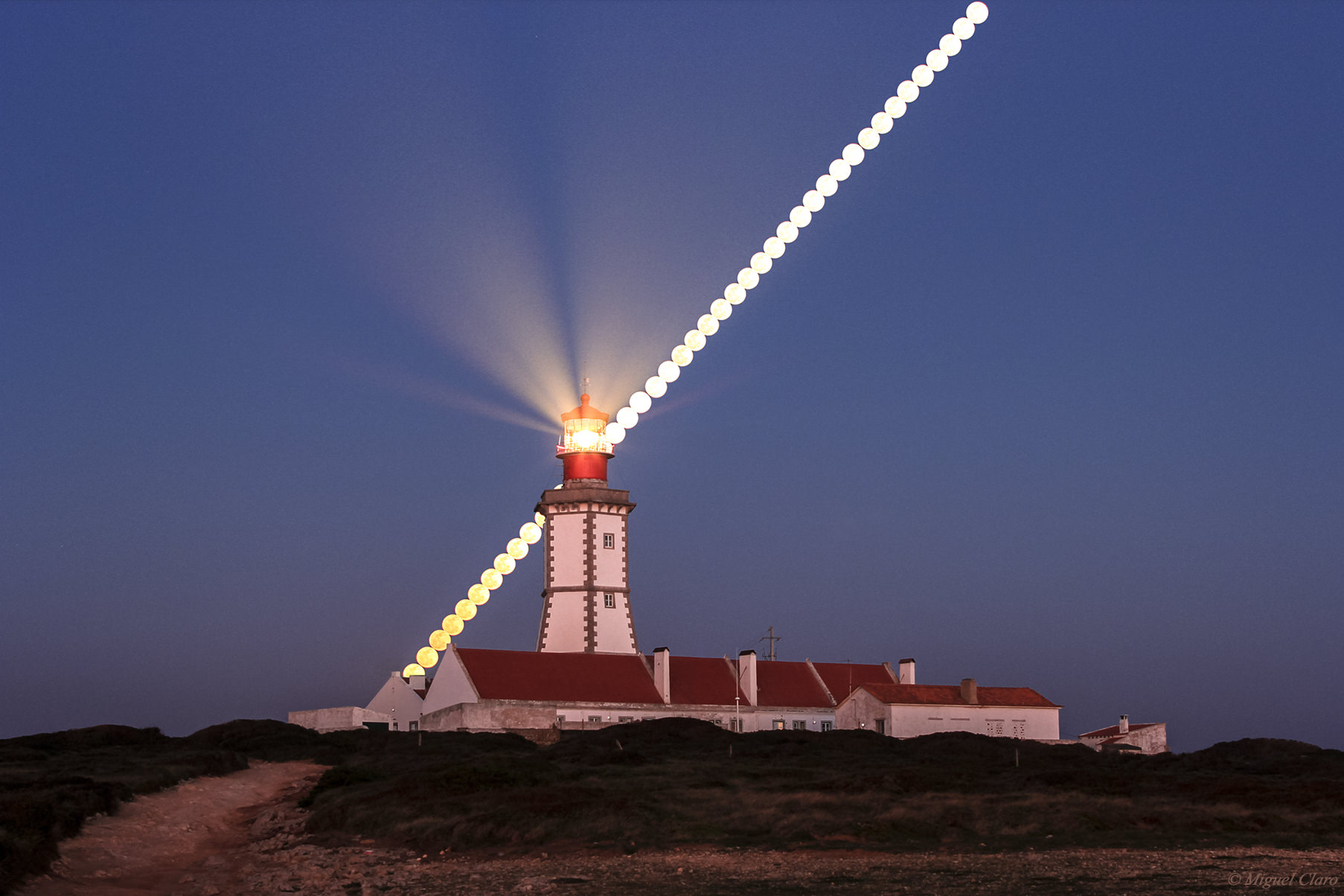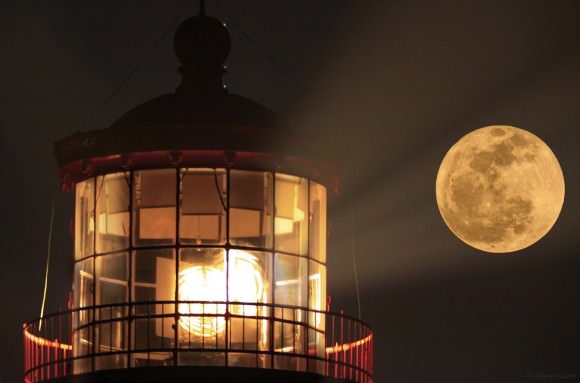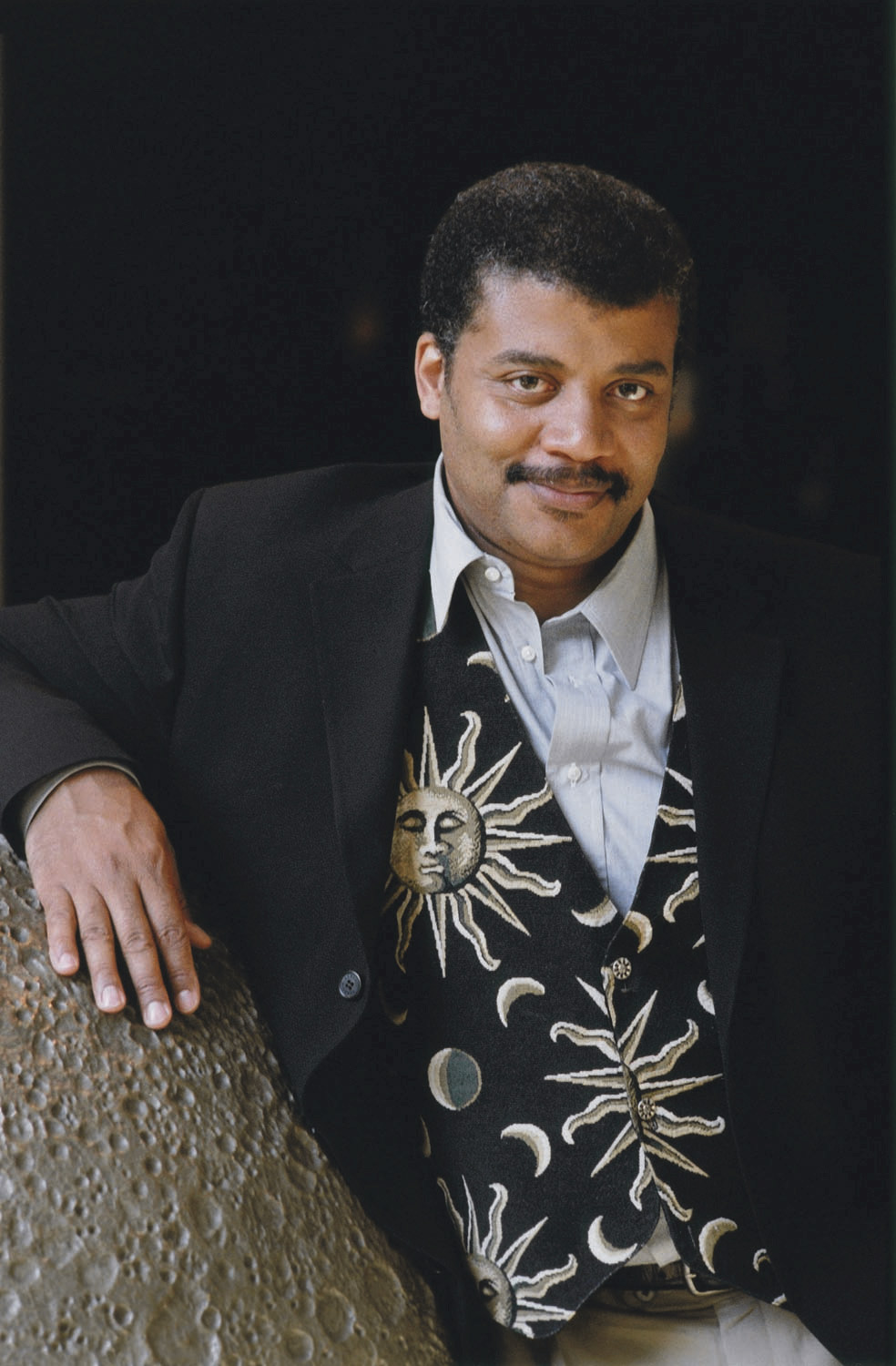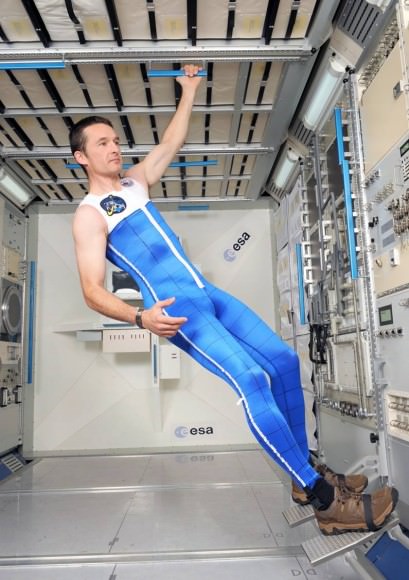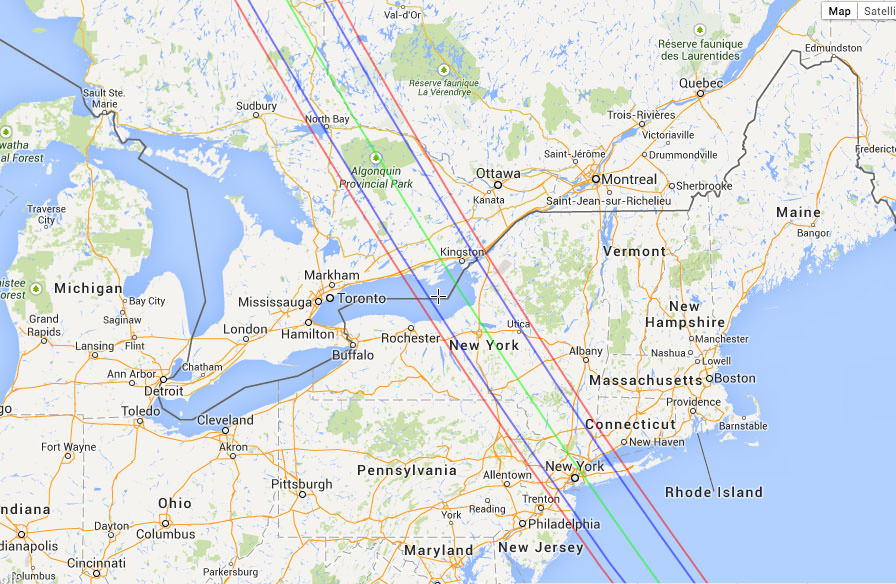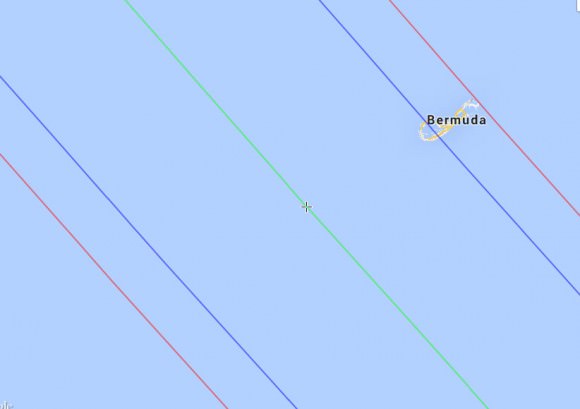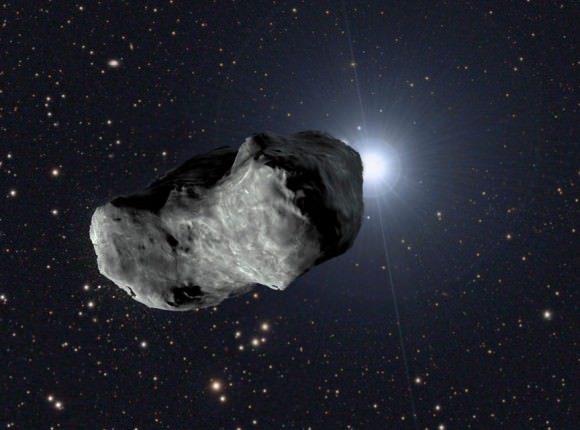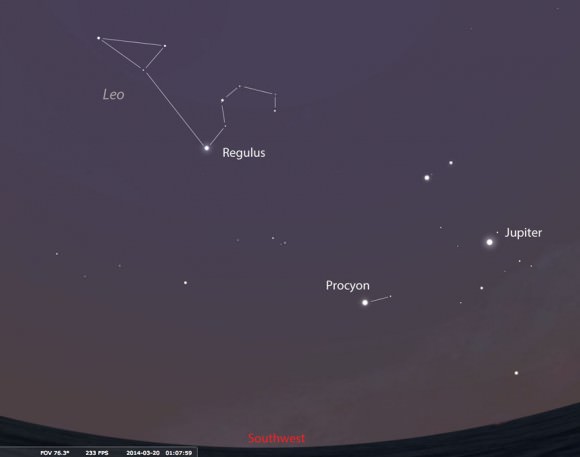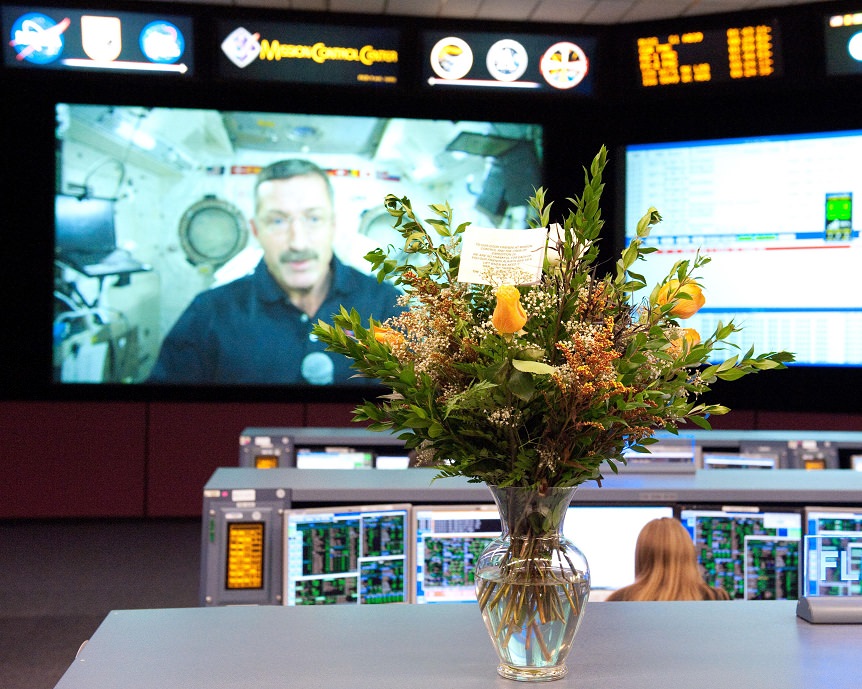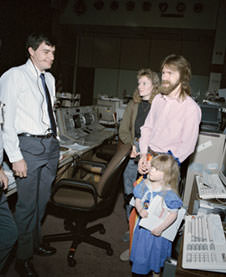Delta 4 Heavy rocket and super secret US spy satellite roar off Pad 37 on June 29, 2012 from Cape Canaveral, Florida. NASA’s Orion EFT-1 capsule will blastoff atop a similar Delta 4 Heavy Booster in December 2014. Credit: Ken Kremer- kenkremer.com
Stroy updated[/caption]
CAPE CANAVERAL AIR FORCE STATION, FL – The urgent need by the US Air Force to launch a pair of previously classified Space Situational Awareness satellites into Earth orbit this year on an accelerated schedule has bumped the inaugural blastoff of NASA’s highly anticipated Orion pathfinder manned capsule from September to December 2014.
It’s a simple case of US national security taking a higher priority over the launch of NASA’s long awaited unmanned Orion test flight on the Exploration Flight Test-1 (EFT-1) mission.
The EFT-1 flight is NASA’s first concrete step towards sending human crews on Beyond Earth Orbit (BEO) missions since the finale of the Apollo moon landing era in December 1972.
Final assembly of Orion is underway at the Kennedy Space Center (KSC).
The very existence of the covert Geosynchronous Space Situational Awareness Program, or GSSAP, was only recently declassified during a speech by General William Shelton, commander of the US Air Force Space Command.
Shelton made the announcement regarding the top secret GSSAP program during a Feb. 21 speech about the importance of space and cyberspace at the Air Force Association Air Warfare Symposium and Technology exposition, in Orlando, FL.
US national security requirements forced NASA’s Orion EFT-1 mission to swap launch slots with the GSSAP satellites – which were originally slated to launch later in 2014.
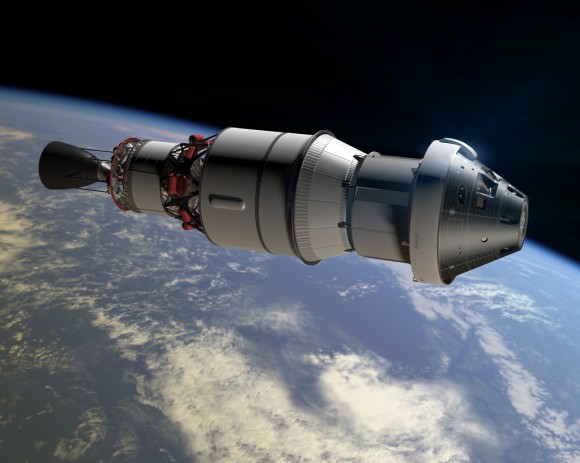
Since both spacecraft will blast off from the same pad at Complex 37 and atop Delta rockets manufactured by United Launch Alliance (ULA), a decision on priorities had to be made – and the military won out.
At a Cape Canaveral media briefing with Delta first stage boosters on Monday, March 17, Universe Today confirmed the order and payloads on the upcoming Delta IV rockets this year.
“The firing sequence for the Delta’s is the USAF Global Positioning System GPS 2F-6 [in May], GSSAP [in September] and Orion EFT-1 [in December], Tony Taliancich, ULA Director of East Coast Launch Operations, told me.
Universe Today also confirmed with the top management at KSC that NASA will absolutely not delay any Orion processing and assembly activities.

“Our plan is to have the Orion spacecraft ready because we want to get EFT-1 out so we can start getting the hardware in for Exploration Mission-1 (EM-1) and start processing for that vehicle that will launch on the Space Launch System (SLS) rocket in 2017,” Bob Cabana, director of NASA’s Kennedy Space Center and former shuttle commander, told me.
Shelton stated that two of the GSSAP military surveillance satellites would be launched on the same launch vehicle later this year.
“GSSAP will present a significant improvement in space object surveillance, not only for better collision avoidance, but also for detecting threats,” Shelton said.
“GSSAP will bolster our ability to discern when adversaries attempt to avoid detection and to discover capabilities they may have, which might be harmful to our critical assets at these higher altitudes.”
According to a new GSSAP online fact sheet, the program will be a space-based capability operating in near-geosynchronous orbit, supporting U.S. Strategic Command space surveillance operations as a dedicated Space Surveillance Network sensor.
“Some of our most precious satellites fly in that orbit – one cheap shot against the AEHF [Advanced Extremely High Frequency] constellation would be devastating,” added Shelton. “Similarly, with our Space Based Infrared System, SBIRS, one cheap shot creates a hole in our environment. GSSAP will bolster our ability to discern when adversaries attempt to avoid detection and to discover capabilities they may have which might be harmful to our critical assets at these higher altitudes.”
GSSAP will allow more accurate tracking and characterization of man-made orbiting objects, uniquely contribute to timely and accurate orbital predictions, enhance knowledge of the geosynchronous orbit environment, and further enable space flight safety to include satellite collision avoidance.
The GSSAP satellites were covertly developed by Orbital Sciences and the Air Force.
Two additional follow on GSSAP satellites are slated for launch in 2016.
“We must be prepared as a nation to succeed in increasingly complex and contested space and cyber environments, especially in these domains where traditional deterrence theory probably doesn’t apply,” Shelton explained. “We can’t afford to wait … for that catalyzing event that will prod us to action.”
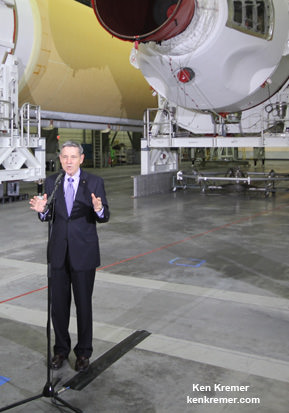
Orion is NASA’s first spaceship designed to carry human crews on long duration flights to deep space destinations beyond low Earth orbit, such as asteroids, the Moon, Mars and beyond.
The inaugural flight of Orion on the unmanned Exploration Flight Test – 1 (EFT-1) mission had been on schedule to blast off from the Florida Space Coast in mid September 2014 atop a Delta 4 Heavy booster, Scott Wilson, NASA’s Orion Manager of Production Operations at KSC, told Universe Today during a recent interview at KSC.
The two-orbit, four- hour EFT-1 flight will lift the Orion spacecraft and its attached second stage to an orbital altitude of 3,600 miles, about 15 times higher than the International Space Station (ISS) – and farther than any human spacecraft has journeyed in 40 years.
Stay tuned here for Ken’s continuing Orion, Chang’e-3, Orbital Sciences, SpaceX, commercial space, LADEE, Mars rover, MAVEN, MOM and more planetary and human spaceflight news.
Learn more at Ken’s upcoming presentations at the NEAF astro/space convention, NY on April 12/13 and at Washington Crossing State Park, NJ on April 6. Also evenings at the Quality Inn Kennedy Space Center, Titusville, FL, March 24/25 and March 29/30

